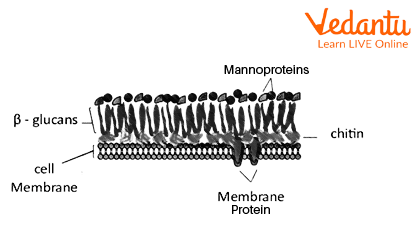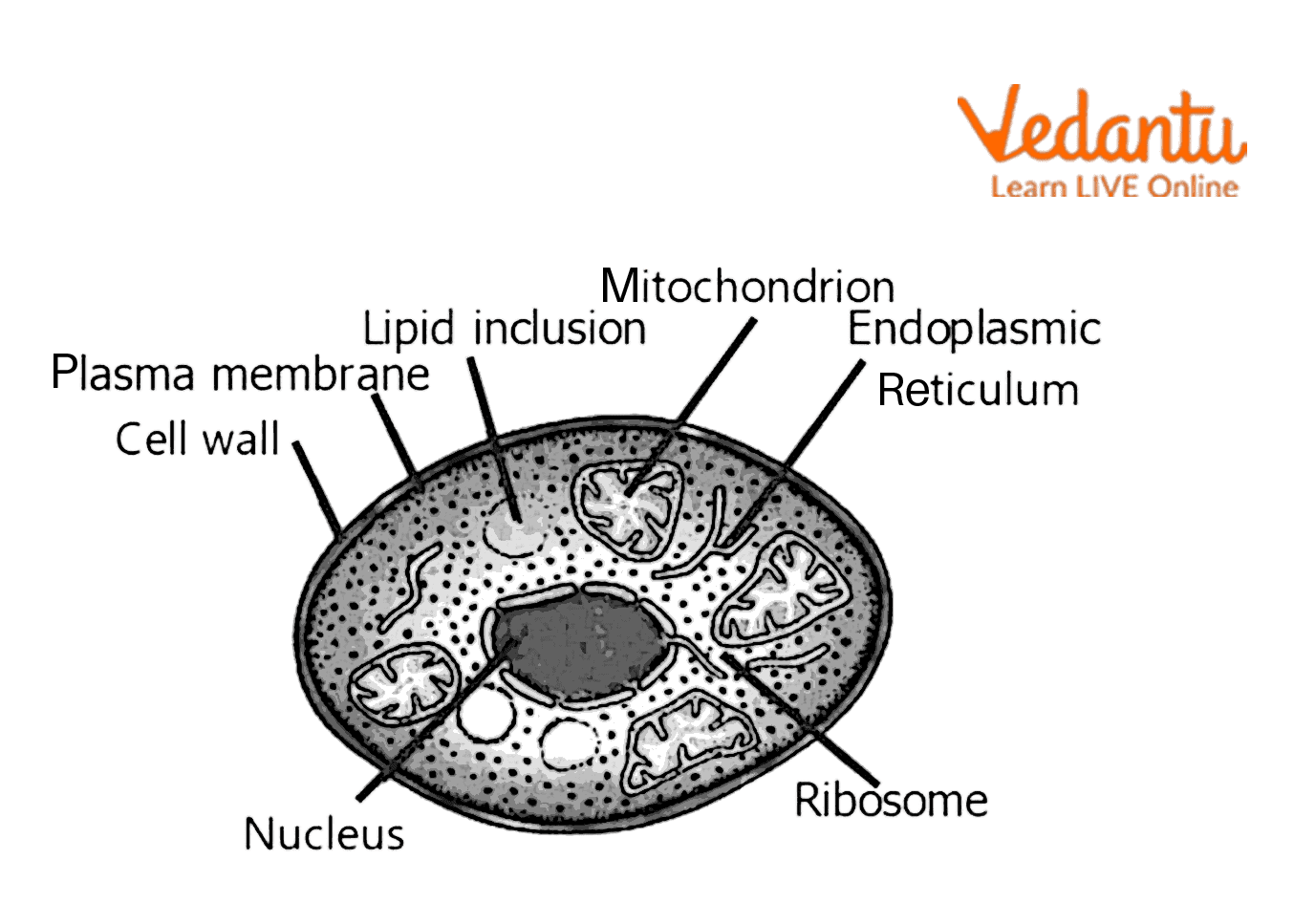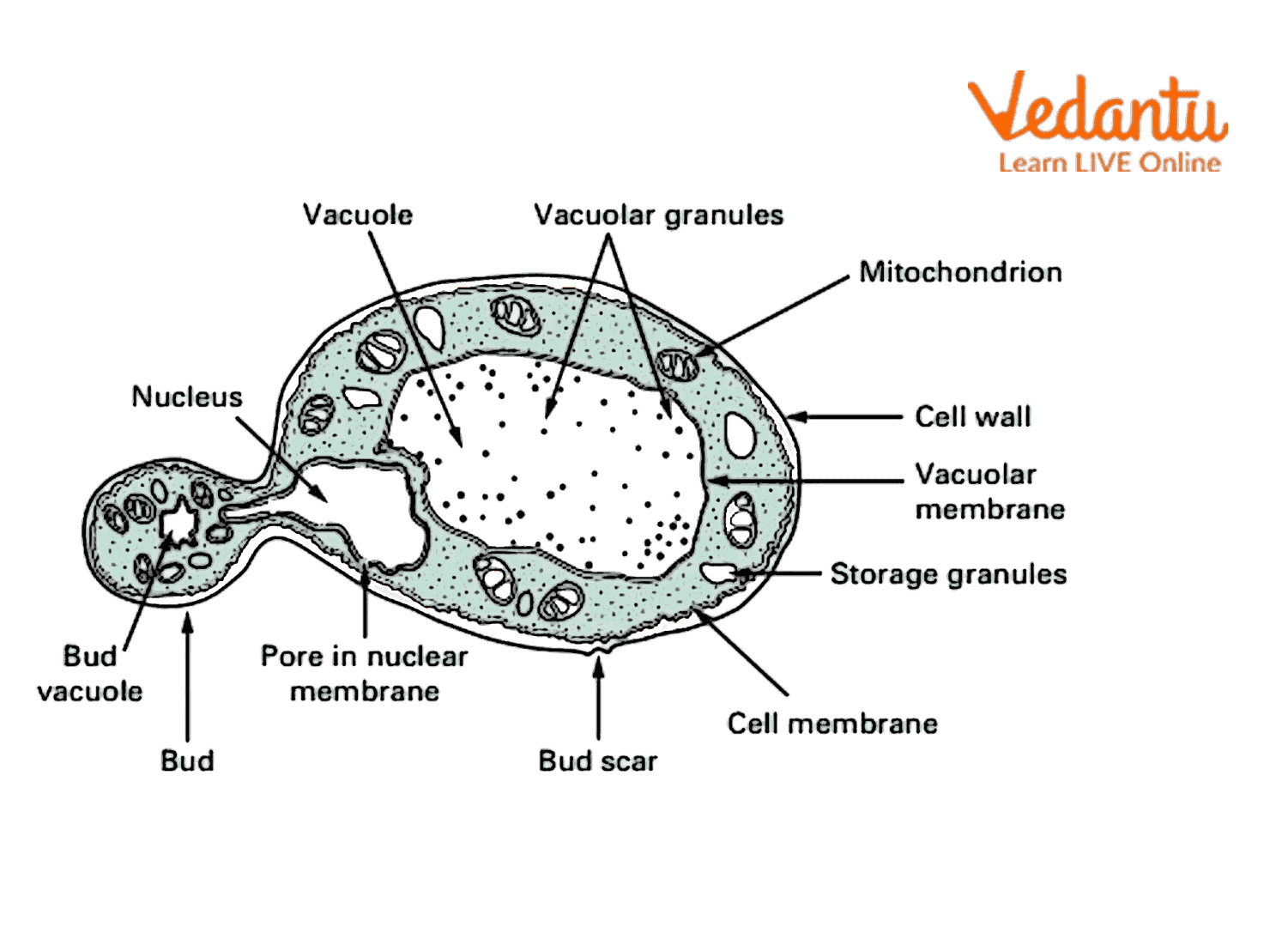Key Components and Functions of the Fungal Cell Wall
The fungal cell wall is a crucial, highly malleable structure that is required for preserving cellular viability and integrity. The cell wall is crucial for many biological processes, including regulating cellular permeability and shielding cells from osmotic and mechanical stress.
The cell wall also facilitates connections with the external environment through adhesins and a significant number of receptors, which upon activation will cause a complex cascade of signals to be sent inside the cell. In addition to proteins, lipids, pigments, and polysaccharides, the cell wall also contains several other substances. In this article, we will discuss the fungi, the fungal cell wall composition, types of fungi and more.

Fungal Cell Wall
What is a Fungal Cell Wall?
The main components of the complex and malleable fungal cell wall include chitin, α- and β-linked glucans, glycoproteins, and colours. This structure has a variety of roles, including regulating cell shape and stiffness, metabolism, ion exchange, acting as a reservoir for carbohydrates, and receptors that are involved in crucial moments during contact with the host. The interface for communication between pathogenic fungi and their hosts is frequently the fungal cell wall.
Classification of Fungi
Fungi are classified in different ways. The classification of fungi is as follows:
Based on the Nutrition Method: On the basis of nutrition, the fungi kingdom can be divided into 3 groups.
1. Saprophytic: The fungi get their food by eating dead organic substances.
2. Parasitic: Fungi consume nutrients from their hosts when they are living inside other living things, such as plants or animals.
3. Symbiotic: These fungi depend on other species in a mutually beneficial, interdependent relationship to survive.
Based on the Spore Pattern: Fungi are divided into the following categories according to spore formation:
1. Zygomycetes: These are created when two different cells come together. Sporangiospores are the names given to the asexual spores, whereas zygospores are the names given to the sexual spores.
2. Ascomycetes: They are also known as sac fungi. They may be saprophytic, parasitic, decomposers, coprophilous, or any of these. Ascospores are the name for sexual spores.
3. Basidiomycetes: These fungi are the most prevalent basidiomycetes and are mostly parasitic organisms. In basidiospores, sexual reproduction takes place.
Species of Fungi
The following are some typical fungus examples:
Yeast
Mushrooms
Moulds
Truffles
Fungi Cell
There are two fundamental morphological forms of fungus: yeasts (unicellular fungi), which produce pseudohyphae, or real hyphae (multicellular filamentous fungi). A true nucleus, internal cell structures, and a cell wall are all in fungi.

Fungi Cell
Cell Wall Composition of Fungi
Observe the fungal cell wall diagram above. Chitin (brown), which is found near the cell membrane, b-1,3- and b-1,6-glucan (green), which are found next to the chitin fibres, and mannoproteins (red), which make up the outermost portion of the cell wall, make up the bulk of the fungal cell wall. The transmembrane chitin synthase transports N-acetylglucosamine residues from uridine diphosphate-N-acetylglucosamine (brown hexagon) to an expanding fibre that is transported across the cell membrane (light blue). A b-1,3-glucan synthase (yellow) converts uridine diphosphate-N-glucose (green hexagon) into glucose, which is then transferred to the extruded b-1,3-glucan fibre.

Cell Wall Composition of Fungi
Fungal Cell Structure
A sophisticated network of internal membranes, including the endoplasmic reticulum and the Golgi apparatus, is also present in fungus cells, along with mitochondria. Fungal cells do not have chloroplasts or chlorophyll, in contrast to plant cells. Numerous fungi have vivid hues, ranging from red to green to black that are produced by different cellular pigments.
Interesting Facts
The cell wall could be a characteristic structure of fungi and consists mainly of glucans, chitin and glycoproteins.
This structure plays many functions, including providing cell rigidity and deciding cell shape; metabolism; ion exchange protecting from osmotic stress etc.
Conclusion
The multi-polymeric structure of the fungal cell wall strikes a compromise between strength and stiffness to resist internal turgor pressure and enough flexibility to allow for the deposition of new material at active growth zones. Glucan and chitin, the two primary structural polysaccharides, are connected together in perfect harmony, but when the natural equilibrium is upset, as could happen after treatment with echinocandin medicines, the chitin biosynthesis pathway reacts by adding more chitin to the wall to strengthen it.


FAQs on Fungal Cell Wall: Structure and Importance
1. Fungi have _________ for their cell walls.
Chitin
In nature, fungi are saprophytes. They often feed on decaying organisms. They don't have chlorophyll either. The chitin that makes up their cell wall is The fungi's cell wall, which is a dynamic structure that shields the cell from external stress and guards against different effects of osmotic pressure variations. The distinctive characteristic of the fungal cell wall is biosynthesis. Fungi have hard cell walls made of complex polysaccharides including chitin, glucans, and glycoproteins. The cell wall offers a support system, stiffness, and defence against dehydration and predators.
2. What distinguishes an animal cell from a fungus cell?
The significant difference between a fungal cell and an animal cell is that an animal cell is one that is found inside the body of an animal. Animal cells are a subclass of eukaryotic cells that include membrane-bound organelles and a "true nucleus" surrounded by a plasma membrane.
The chlorenchyma cells, however, are those of the plant. They are the parenchymal cells that contain chloroplasts. These cells have a soft, uniformly thin cell wall and are not linked. They serve as a store for photosynthetic organisms.
3. What are the drawbacks of a cell wall?
There are a few drawbacks to having a cell wall:
The cell loses flexibility. By exerting wall pressure, a cell wall restricts a cell's freedom of movement. If our WBCs had cell walls, they wouldn't be able to pass through obstructions to reach their goal.
There is a slower-than-average rate of substance exchange. Without a cell wall, which just widens the gap between the extracellular and intracellular environments, it is much easier for chemicals to diffuse (both into and out of the cell).










